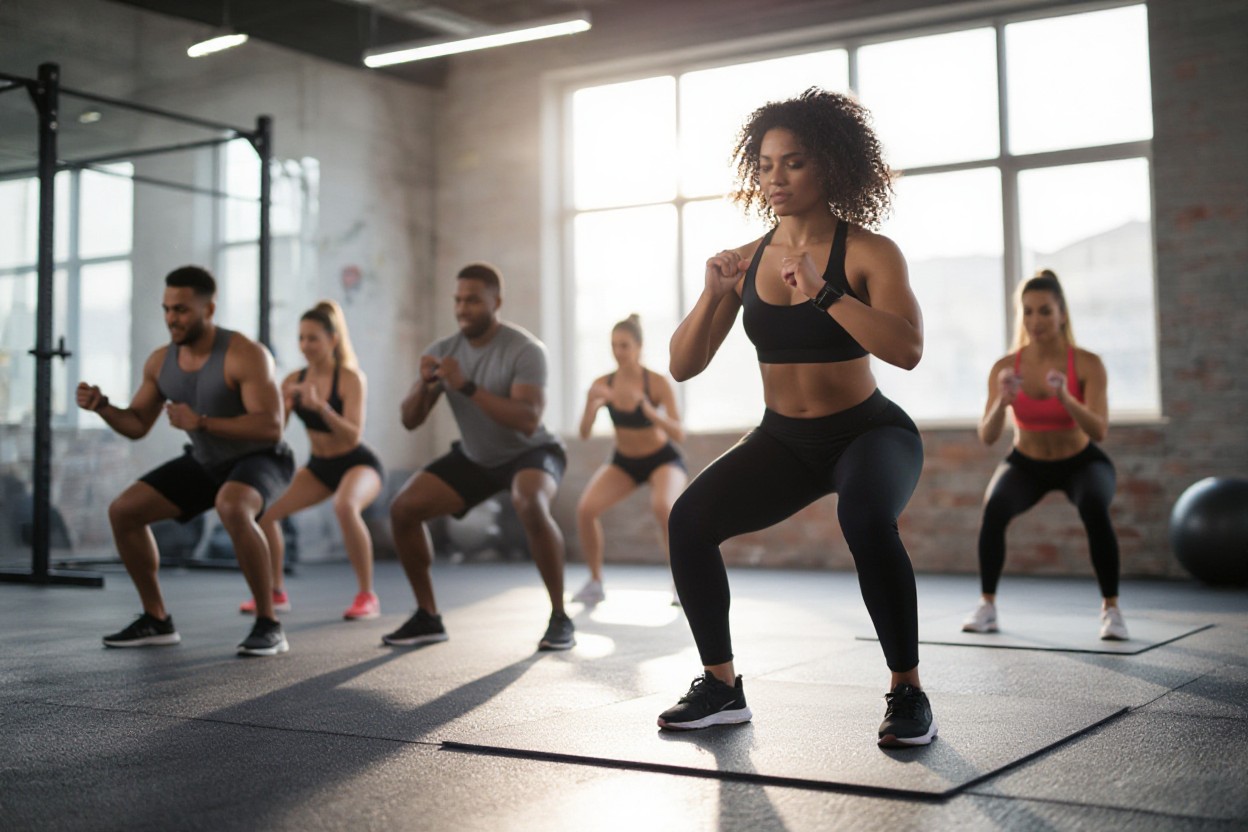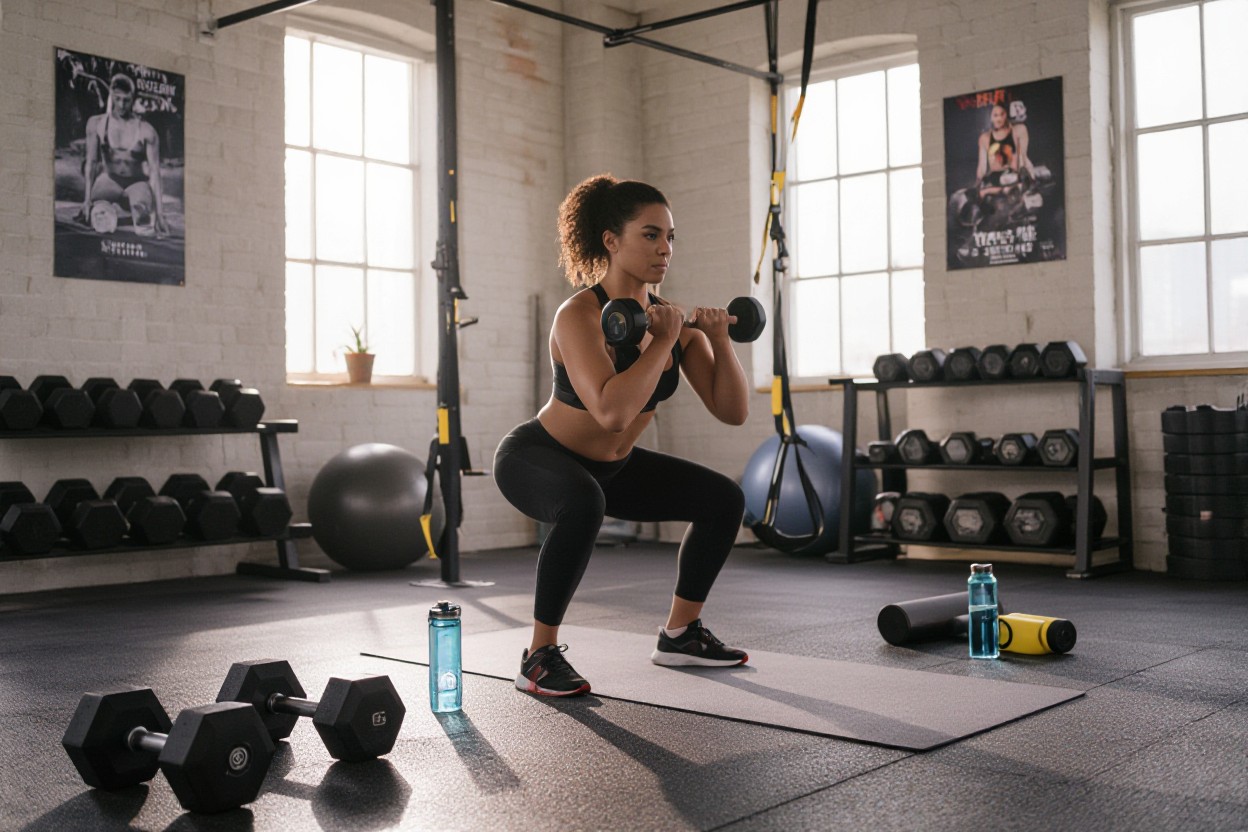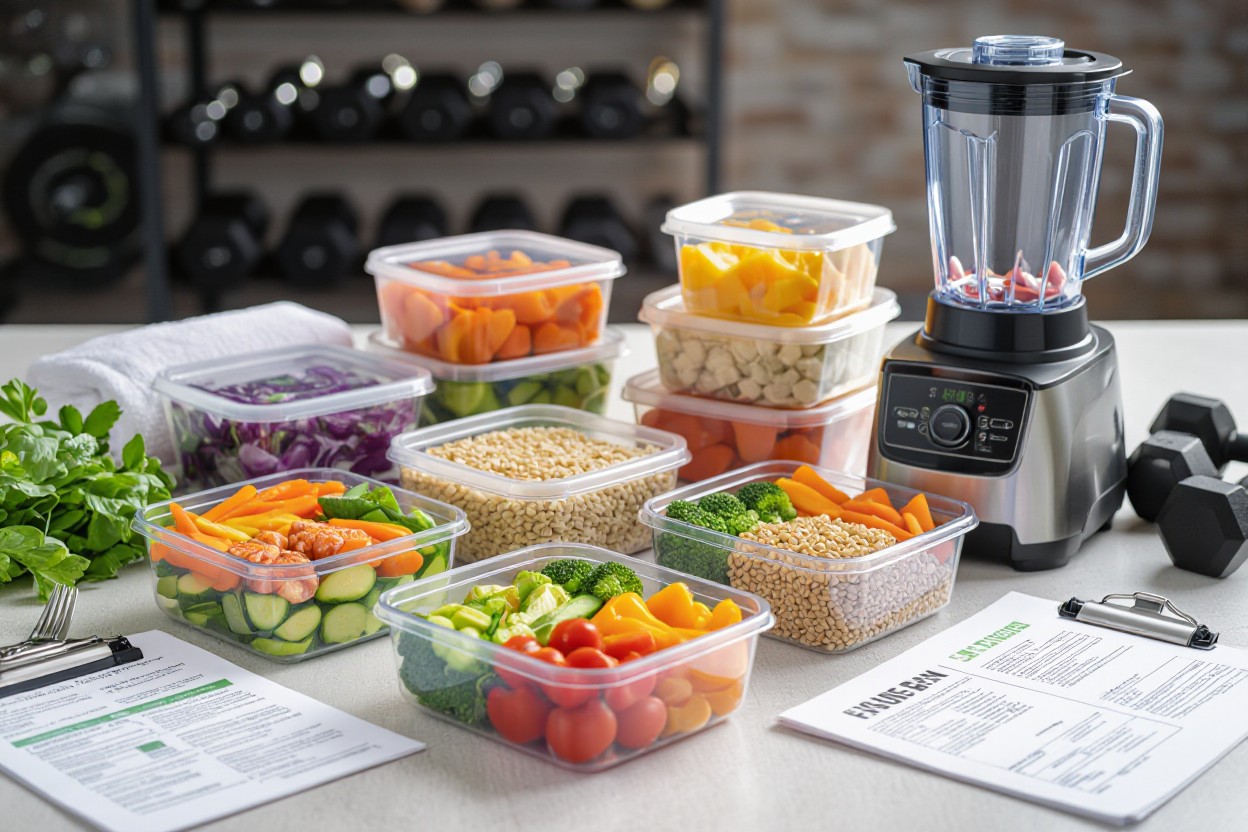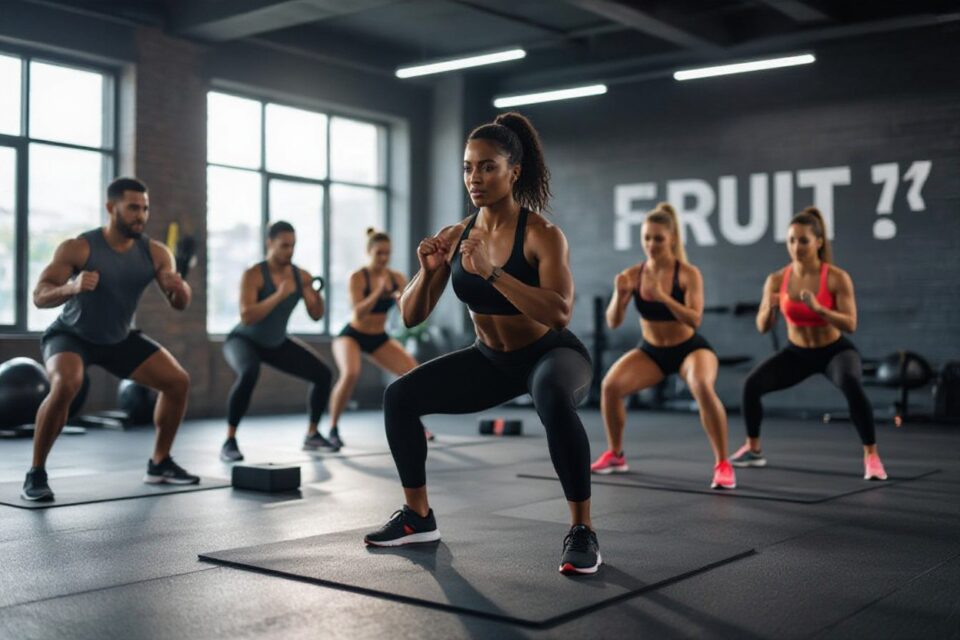You often find it challenging to fit exercise into your hectic schedule, but a full-body HIIT workout can deliver maximum results in minimum time. This guide will show you how to efficiently burn calories, build strength, and improve cardiovascular health with no equipment needed. By incorporating this time-effective routine, you’ll maintain consistent fitness progress without compromising your busy lifestyle. Stay safe by focusing on proper form to avoid injury, and embrace the energy boost that only a well-structured HIIT session can provide.

The Science of HIIT: Why It Works
HIIT leverages short bursts of maximum effort followed by brief recovery periods to effectively stimulate both aerobic and anaerobic systems. This dual activation leads to improved cardiovascular health, increased metabolic rate, and enhanced fat oxidation well beyond the workout duration. By engaging multiple muscle groups dynamically, HIIT maximizes energy expenditure, making it an efficient choice for those squeezed for time yet aiming for comprehensive fitness gains.
The Physiology of High-Intensity Training
During high-intensity intervals, your body rapidly switches to anaerobic metabolism, generating energy without oxygen and producing lactate, which serves as a fuel source post-exercise. This process boosts mitochondrial density and increases your resting metabolic rate by up to 15%, enabling your body to burn more calories even while at rest. Additionally, HIIT triggers greater secretion of human growth hormone (HGH), enhancing muscle repair and fat metabolism simultaneously.
Mental Benefits: Boosting Productivity and Focus
High-intensity workouts stimulate the release of neurotransmitters like dopamine and norepinephrine, which sharpen your cognitive functions, improve alertness, and mitigate mental fatigue. Post-exercise, you may notice a surge in focus and a more positive mood, translating into heightened productivity during your busy day. Studies show even a 10-minute HIIT session can elevate brain-derived neurotrophic factor (BDNF), fostering neural growth and improving memory.
Diving deeper, the mental lift from HIIT isn’t just temporary. Regular sessions enhance neuroplasticity, the brain’s ability to adapt and reorganize itself, which means consistent training can support long-term cognitive resilience. This mental edge is invaluable for managing the stress and multitasking demands that come with a hectic schedule, making HIIT not just a physical investment but a psychological one.
Quick and Effective Full-Body HIIT Workouts
Finding time for exercise can be tough, but HIIT workouts maximize every minute. You can train your entire body with a mix of cardio, strength, and plyometric moves in sessions that last as little as 15 to 30 minutes. Incorporating exercises like jump squats, push-ups, and mountain climbers into quick circuits keeps your heart rate elevated and muscles engaged, so you get a full-body challenge that ignites metabolism well beyond your workout.
The 20-Minute Power Circuit
The 20-Minute Power Circuit combines six exercises performed in 40-second bursts with 20 seconds of rest. For example, cycling through burpees, kettlebell swings, push-ups, jumping lunges, plank rows, and high knees keeps intensity high. This structure lets you hit major muscle groups and ramp up cardiovascular effort without equipment, creating a time-efficient routine that burns around 250-300 calories depending on your effort.
Customizing Your Routine for Any Schedule
Adapting your HIIT routine is simple and effective. If you only have 10 minutes, focus on fewer exercises with increased intensity, like sprint intervals or jump rope rounds. For longer sessions, add strength moves like weighted squats or overhead presses. Adjust rest periods—shorter rests intensify the challenge, while longer breaks help preserve form and reduce injury risk. Tailoring your workout to available time and fitness goals ensures consistent progress.
By mixing and matching exercises and adjusting interval lengths, you create a versatile framework that fits into unpredictable days. For example, if mornings are tight, a quick 5-minute tabata focusing on bodyweight movements can rev up energy levels. On weekends, extend sessions to include mobility or core focus segments. This flexibility not only keeps your workouts fresh but also supports sustained adherence, an crucial factor for lasting fitness results.

Essential Equipment for Busy Schedules
Choosing equipment that fits seamlessly into your routine can enhance efficiency and results. A set of adjustable dumbbells offers versatility with space-saving design, letting you switch weights quickly. Resistance bands provide variable tension, ideal for targeting different muscle groups without bulky gear. Incorporating a quality jump rope into your routine adds a cardio element that boosts calorie burn, all while requiring minimal storage. Selecting these compact, multipurpose tools helps maintain momentum even when time and space are limited, letting you stay consistent with your workouts without extra hassle.
Must-Have Minimal Gear for Maximum Impact
Dumbbells ranging from 5 to 20 pounds enable progressive overload, imperative for muscle growth and endurance. A sturdy yoga mat supports floor exercises and stretches, preventing injuries. Resistance bands of varying tensions help scale exercises according to your strength levels and increase the intensity of movements like squats or rows. A high-quality jump rope can ramp up fat loss and cardiovascular capacity in short bursts. Together, these imperatives provide a comprehensive approach to full-body training that doesn’t crowd your living space or your schedule.
Creative Alternatives for Home Workouts
Household items can substitute traditional equipment when time or space is tight. Filled water bottles or canned goods make excellent lightweight dumbbells. Sturdy chairs are excellent for step-ups, tricep dips, or elevated push-ups. Towels rolled tightly serve as sliders for mountain climbers or lunges on smooth floors, adding a core challenge. Incorporating these creative options keeps your workout varied and accessible without the need to invest in specialized gear.
When you swap conventional workout tools for household alternatives, the options multiply in unexpected ways. Using a backpack filled with books adds resistance for squats and lunges, while stairs around your home can turn into an effective cardio station by doing quick step-ups or jumps. Even the back of a couch can be utilized for support during balance exercises or wall sits. This adaptability is especially valuable during hectic days, ensuring that no matter where you are, your fitness routine stays uninterrupted and effective.

Nutritional Strategies to Fuel Your HIIT
Maximizing your HIIT performance hinges on smart nutritional choices that promote energy and recovery. You’ll want to tailor your diet to support high-intensity efforts by balancing macronutrients, focusing on quick-digesting carbs before exercise, and protein alongside antioxidants afterward. Hydration also plays a vital role in maintaining peak output and preventing fatigue. These strategies minimize energy slumps and muscle breakdown, facilitating more consistent progress within limited timeframes. The ability to sustain your full-body workout hinges on these often overlooked nutritional details that empower every session.
Pre- and Post-Workout Fueling Tips
Approximately 30 to 60 minutes before your session, consuming 20-40 grams of easy-to-digest carbohydrates like a banana or oatmeal primes your muscles for sustained energy release. Post-workout, prioritize 15-25 grams of protein combined with carbs—such as Greek yogurt with berries—to stimulate recovery and muscle repair. Staying hydrated before, during, and after helps offset sweat-induced fluid loss, which often exceeds 1 liter per hour in high-intensity exercise. The right timing and composition of your meals amplify the benefits of your HIIT workout efficiently.
Meal Prep Hacks for Busy Individuals
Multi-day meal prep saves time and ensures consistent nutrient availability for your workouts. Batch cooking lean proteins like grilled chicken or tofu, paired with roasted vegetables and quinoa, provides balanced meals rich in protein and complex carbs. Portion meals into containers for grab-and-go convenience, reducing decision fatigue during hectic days. Using slow cookers or instant pots allows setting it and forgetting it, so you come home to ready-made fuel. The consistent supply of quality nutrients removes barriers to fueling your HIIT routine amid a packed schedule.
Staying Motivated and Consistent
Maintaining momentum hinges on weaving your workout routine into daily habits that feel natural. You’ll stay consistent by adjusting intensity and timers based on progress, preventing plateaus and boredom. Prioritize quick sessions with clear targets to keep enthusiasm high, especially when time is tight. Novelty, like alternating between sprint intervals and strength moves or crafting mini challenges, injects fresh energy. Routine adjustments aligned to physical feedback will help you dodge burnout, making exercise a sustainable boost rather than a chore.
Setting Realistic Goals and Tracking Progress
Define achievable milestones that sync with your lifestyle and fitness level—for instance, completing a full 20-minute HIIT session thrice weekly rather than overcommitting. Tracking your consistency, reps, and rest intervals with apps or journals paints a clear picture of improvement and keeps motivation tangible. Break goals into smaller targets, such as adding five more reps or cutting rest times by 10 seconds, so you appreciate steady wins that fuel long-term commitment.
Finding Community and Support Online
Engaging with online fitness groups introduces accountability and shared enthusiasm, vital for busy individuals balancing multiple demands. Platforms like Reddit’s r/HIIT or Facebook groups dedicated to quick workouts offer inspiration, tips, and encouragement from peers facing similar schedules. You can exchange real-time insights, troubleshoot challenges, and celebrate progress, enhancing your journey with social reinforcement that transforms individual effort into a collective experience.
The best online communities combine diverse interaction modes—live-streamed workouts, Q&A sessions with trainers, and challenge boards—that keep you connected beyond solo sessions. For example, fitness apps like Strava or Peloton not only let you join group challenges but also rank your performance among friends, sparking healthy competition. In these spaces, you’ll gain personalized feedback and motivation tailored to your pace while tapping into a wealth of shared knowledge to refine technique and nutrition. This network effect turns sporadic workouts into a consistent, enriching habit supported by like-minded enthusiasts worldwide.
Summing up
Upon reflecting on this full-body HIIT workout designed for busy schedules, you can see how efficiently it maximizes your time without sacrificing effectiveness. You engage multiple muscle groups and boost your cardiovascular health in a short period, allowing you to maintain your fitness goals despite a hectic day. By integrating this routine into your lifestyle, you empower yourself to stay active, build strength, and improve endurance, all while managing your time wisely. This approach ensures you make every minute count toward your health and well-being.
FAQ
Q: What is the main benefit of a full-body HIIT workout for busy schedules?
A: A full-body HIIT workout maximizes exercise efficiency by targeting multiple muscle groups in a short period. This allows you to get a comprehensive workout even with limited time, making it ideal for those with busy schedules.
Q: How long does a typical full-body HIIT workout last?
A: Most full-body HIIT workouts range from 15 to 30 minutes. This duration includes intense activity periods mixed with short rest intervals, providing an effective high-intensity session without requiring a large time commitment.
Q: Can beginners safely perform full-body HIIT workouts?
A: Yes, beginners can perform full-body HIIT workouts by starting with modified or low-impact exercises, reducing intensity and duration as needed. It is advisable to focus on proper form and gradually increase difficulty to prevent injury.
Q: What types of exercises are typically included in a full-body HIIT workout?
A: Common exercises include bodyweight movements such as squats, lunges, push-ups, burpees, mountain climbers, and jumping jacks. These exercises engage multiple muscle groups and can be modified for different fitness levels.
Q: How often should I do a full-body HIIT workout to see results?
A: For balanced fitness improvement, aim for 3 to 4 full-body HIIT sessions per week. This frequency allows sufficient recovery time while promoting cardiovascular health, muscle tone, and fat loss.
Q: What equipment is needed for a full-body HIIT session?
A: Many full-body HIIT workouts require no equipment and use bodyweight exercises. However, optional equipment like dumbbells, kettlebells, or resistance bands can be incorporated to increase intensity and add variety.
Q: How can I stay motivated to complete a full-body HIIT workout during a busy day?
A: Setting clear goals, scheduling workouts as part of your daily routine, and focusing on the time-efficiency of HIIT can help maintain motivation. Additionally, using music, workout apps, or partnering with a friend can make sessions more enjoyable and engaging.
